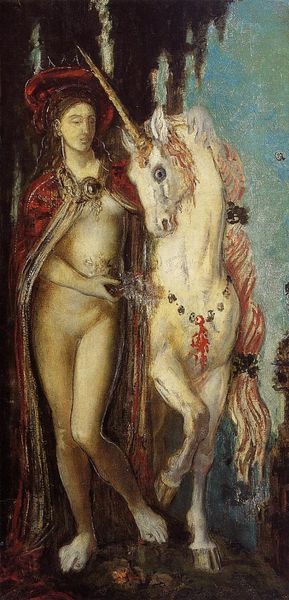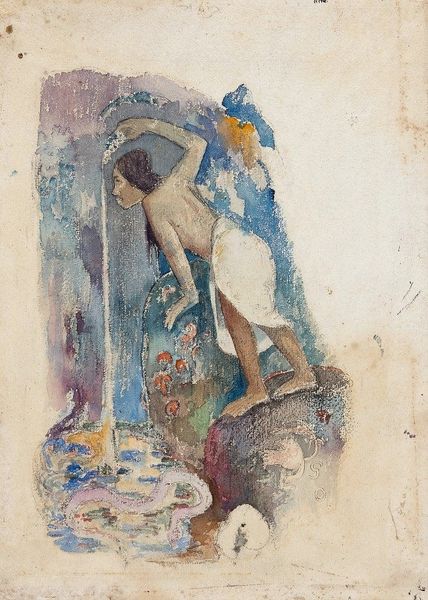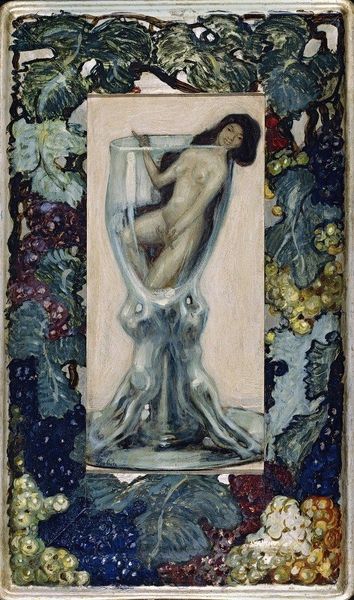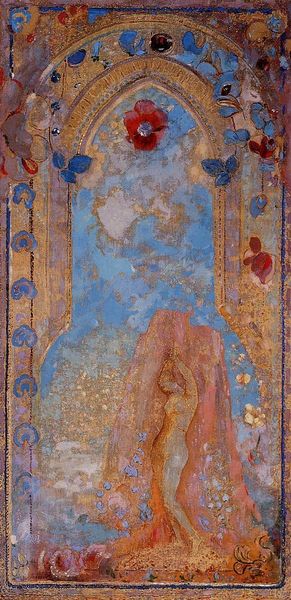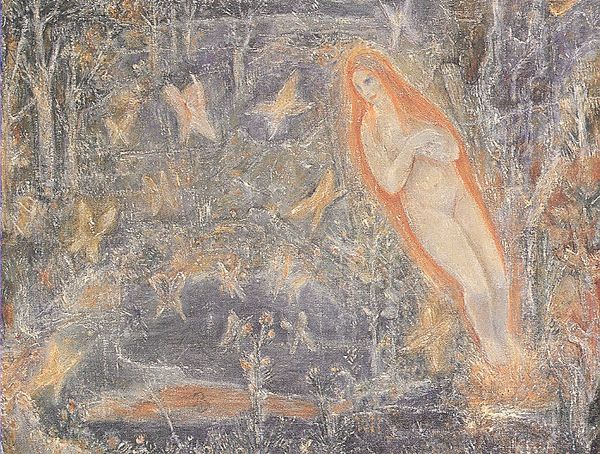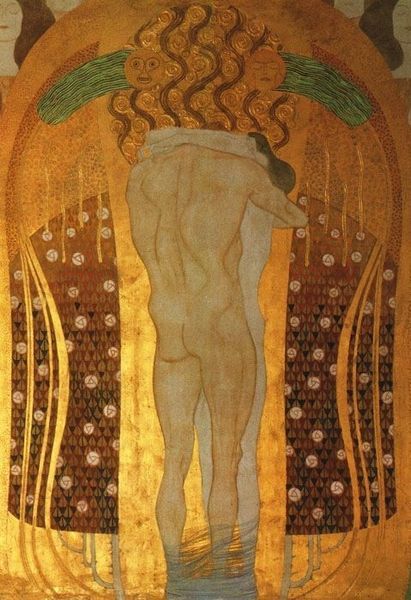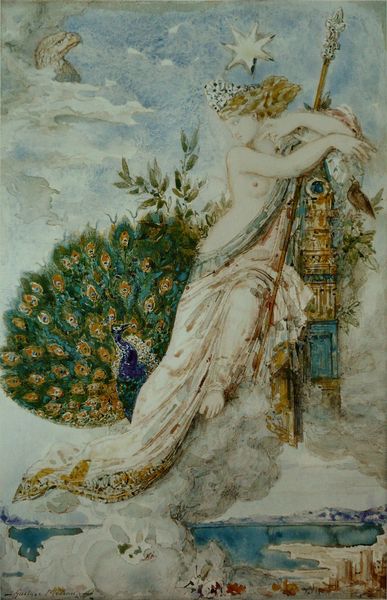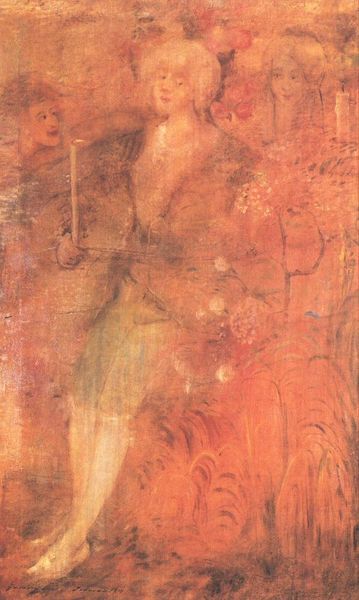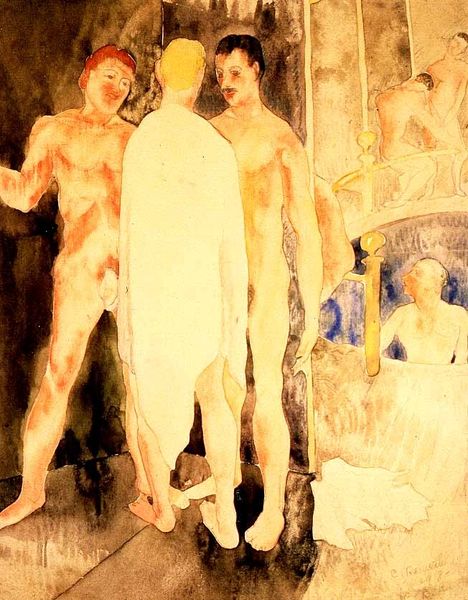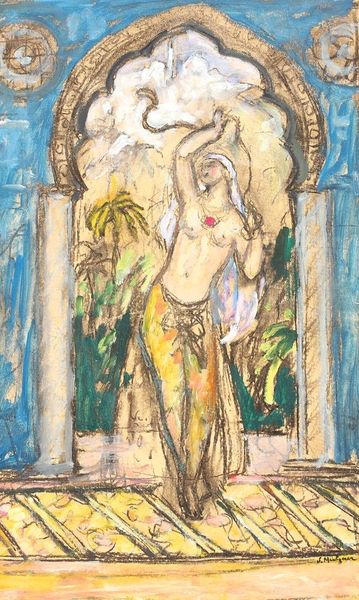
Salome (Entering the Banquet Room) 1875
gustavemoreau
Musée National Gustave Moreau, Paris, France
painting, watercolor
portrait
painting
painted
figuration
oil painting
watercolor
orientalism
symbolism
history-painting
nude
watercolor
Copyright: Public domain
Curator: Standing before us is "Salome (Entering the Banquet Room)" created around 1875 by Gustave Moreau. It's currently held in the Musée National Gustave Moreau in Paris. What are your initial thoughts on this work? Editor: There's something ethereal about this painting, like a dream shimmering into focus. Salome seems almost spectral. The whole piece glows with an otherworldly intensity. Curator: Moreau’s Salome really exemplifies the Symbolist movement’s fascination with decadent and often fatal femmes. His choice of watercolor and oil evokes both the tangible and the transient nature of this biblical story. Salome was a controversial character as society perceived her responsible for John the Baptist's death, do you think that’s why Moreau represented her in this ghostly ethereal way? Editor: Absolutely. The luminosity, her nearly spectral presence - it amplifies her ambiguity. Is she a triumphant seductress, or a vessel compelled by darker forces? Her pose is self-conscious, looking downwards while her arms are self-embrace as if she does not realize the weight of her gesture. The symbols surrounding her seem almost indecipherable at first glance. Curator: Moreau intended that layered effect. His use of Orientalist motifs—those ornate, quasi-Middle Eastern architectural details—further exoticizes the scene, placing it both in a specific historical context and a realm of fantasy. We must not overlook the painting's cultural effect on representing Salome, it contributed to solidify ideas and prejudice toward women with positions of power. Editor: The contrast between her exposed body and her crown, is an intriguing juxtaposition between vulnerability and royalty, wouldn't you say? Her demure gaze tells a different story though, and it opposes any visual association between Salomé and her dangerous status. Curator: Indeed, this contrast raises interesting questions about how societies perceive and portray female agency. As viewers, are we invited to judge or understand her? Was Salome fully conscious of her role, or simply a pawn in larger political games? It makes me wonder what were the social circumstances around the artwork production and which conversations Moreau was a part of during that time. Editor: Exactly! Moreau uses visual symbols to capture not just a story, but the persistent cultural anxieties surrounding female power. Curator: Thank you for sharing these intriguing perspectives. Editor: Thank you for sharing, I have learned new ideas about this controversial topic.
Comments
No comments
Be the first to comment and join the conversation on the ultimate creative platform.
